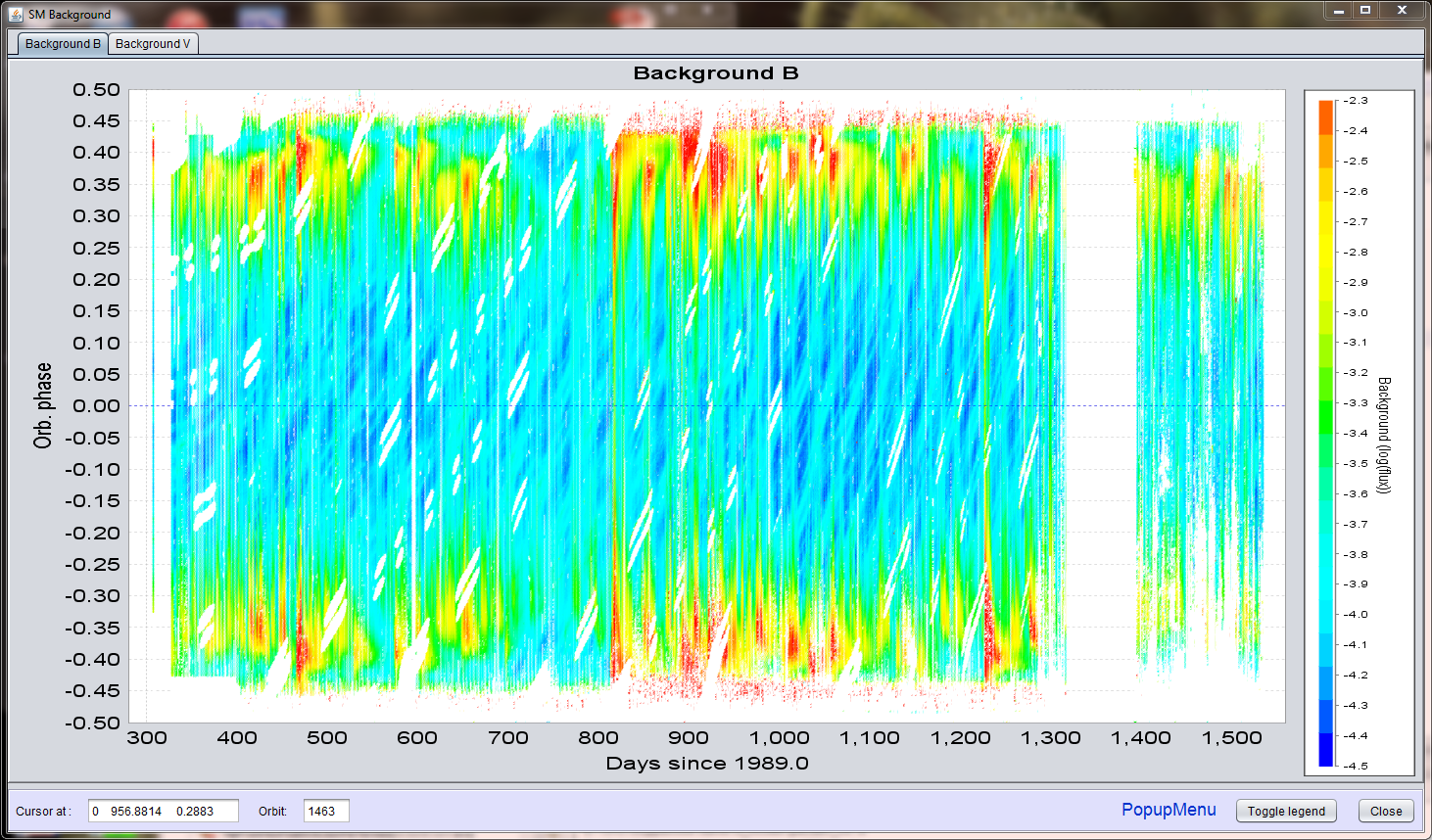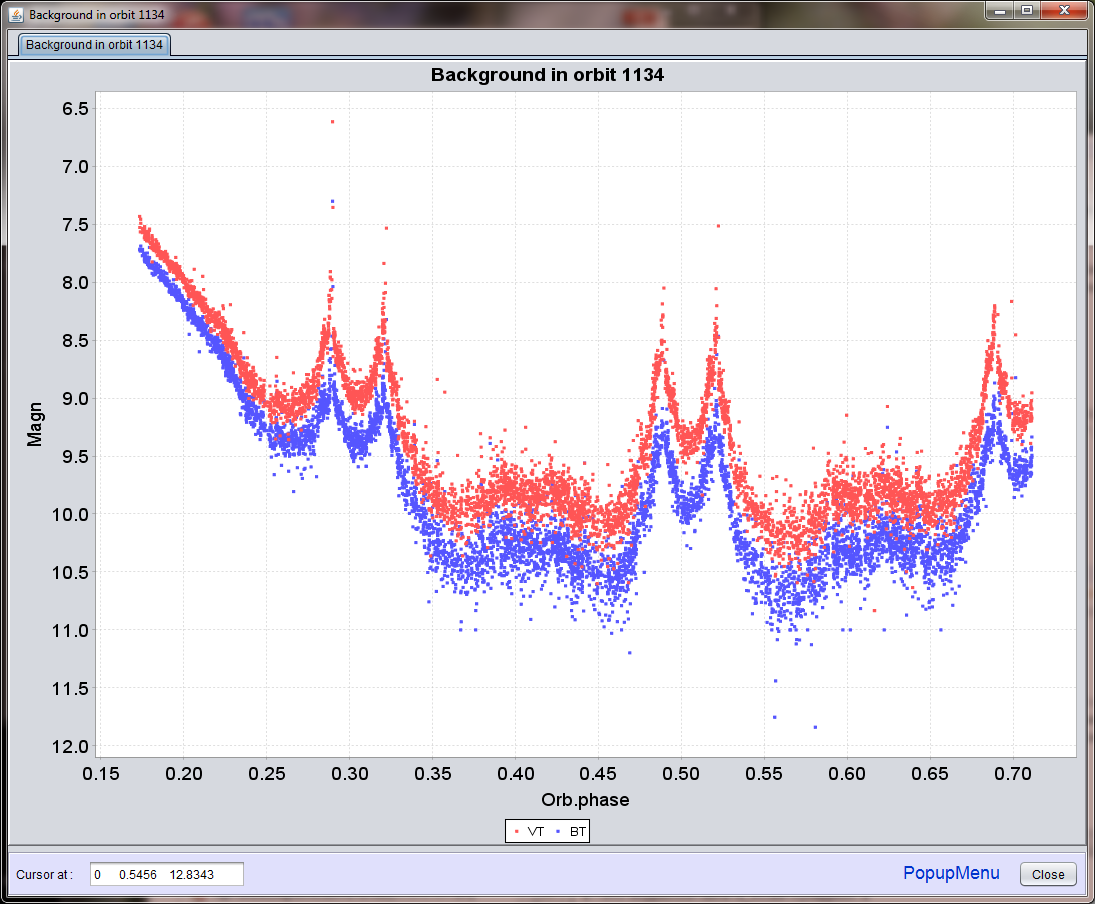Star mapper background
The background monitoring for the star mapper detectors could take place any time observations were obtained, independent of the convergence of the on-board attitude control system. The background measurements reflect the peculiar geostationary transfer orbital for Hipparcos. This caused a break in contact close to perigee and twice during the orbit a transit through the Van Allen belts. The latter can be recognized as the series of red features in the chart below. These features were every now and then enhanced due to a burst in solar activity, and the gradually depleted again over time.
Near perigee, around orbital phase 0, there is a reflection of the ecliptic plane transits visible, as well as periods when no observations were obtained as the image of the Earth was obscuring the sky. The resolution in the maps is 0.002 in orbital phase, and 1 in orbits.

The full data set for a single orbit can also be shown. It is shown here in magnitude scale, which means that the background is at the same level as the transit of a star at the indicated magnitude. The double peaks are the transits of the two fields of view through the ecliptic plane, reflecting the zodiacal light. More obscure are the transits through the galactic plane, in this case about halfway the ecliptic plane transits.
